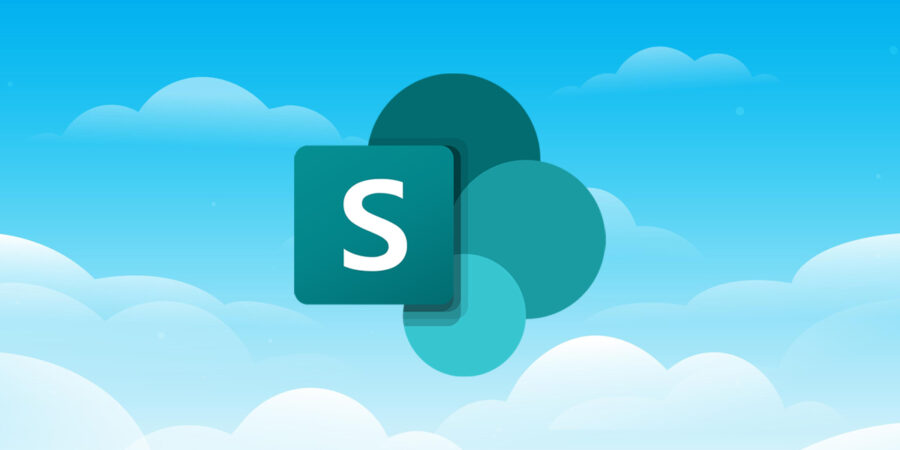SharePoint Online vs on premise: 6 reasons to migrate today
Moving your intranet to the cloud is no simple undertaking — so is it worth the trouble? In this article we’re going to assess the benefits of SharePoint Online vs on premise. Overall, our experience as SharePoint consultants shows that moving to SharePoint Online is beneficial for the majority of businesses.
Before we can assess benefits, though, we need to know what we’re measuring. So the first thing we should ask is: what challenges is SharePoint trying to solve?
A very brief history of SharePoint
In the past, businesses used to store and manage their documents on file servers. While this was a step up from everyone keeping files on their own hard drives, there was room for improvement.
Firstly, people can easily forget to save files on the company drive. Then someone has to spend time scouring their inbox or getting the file from a colleague. It’s also common for content to get duplicated, meaning staff are working on outdated versions. The outcome is a less productive workforce.
Some of the features that differentiate SharePoint from file servers include:
- automatic versioning: SharePoint preserves a draft every time a document is updated or revised. Each version is linked to all the other versions, so it’s easy to find and restore versions if necessary
- built-in integration: Microsoft tools like Word and Excel integrate seamlessly with SharePoint. This Microsoft ecosystem eliminates the friction between different types of software
- file check-in: SharePoint keeps track of who is working on a document at any time. This stops people unwittingly overwriting each other’s changes
- custom workflows: SharePoint helps speed up processes like document review, by automatically emailing the right people at the right time
In essence, SharePoint emerged to overcome the challenges that had plagued file servers. SharePoint Online is the latest step in that evolution — bringing even more flexibility, functionality, and value to the workforce. We’ll cover these SharePoint Online advantages in more detail below.
SharePoint migration case study
Cloud migration for an agricultural intranet
With SharePoint 2010 end of life looming, we helped this agricultural board move to SharePoint in Office 365. The result was a future-proof and cost-effective intranet with increased staff adoption.
What are the benefits of SharePoint Online vs on premise?
Microsoft offers SharePoint Online as a stand-alone product or as part of the Office 365 suite. Whichever you choose, SharePoint Online’s cloud deployment makes it easy to integrate with both Microsoft and third-party applications.
And remember that migrating to SharePoint Online isn’t all-or-nothing. You can keep sensitive information and custom functionality in SharePoint on premise, while moving the rest to the cloud.
With this in mind, there are very few organisations that will not see benefits from moving to SharePoint Online. Based on our 30 years’ experience of intranet portal solutions, we’ve picked out the top advantages below.
1. Better value for money
Maintaining on-premise servers puts a heavy strain on IT budgets and personnel. A decision to migrate to SharePoint Online frees that time and money for more valuable tasks.
Your IT team will thank you for letting them drive the business rather than endlessly supporting dated technologies. And your intranet will achieve more for less.
2. No end-of-life worries
One of the major benefits of SharePoint Online vs on premise is saving yourself from the need to upgrade. Microsoft end of support and end of life are always looming over your on-premise SharePoint servers.
SharePoint Online users, on the other hand, benefit from automatic updates. This won’t override any customisation to your SharePoint sites, but will make sure the system is up-to-date and secure.
3. Collaborate on the go
The line between business-facing software and customer-facing websites is increasingly thin. Employees expect your intranet to be just as user-friendly as the commercial apps on their phones. And why not?
Thankfully, SharePoint Online sites are now mobile-friendly by design. That means your employees no longer have to squint at tiny text on a mobile screen.
The benefit is clear: no matter where they are, SharePoint Online gives people the tools they need to collaborate effectively.
4. Advanced online features
New Microsoft features reach SharePoint Online before they appear on-premise (if they reach on-premise at all).
Some of the most useful online-only features include:
- Microsoft Graph: a database for collecting information on user identity and activity
- Delve: a collaboration tool that connects colleagues to create, edit, and share documents
- Power Automate: build time-saving workflows for individual tasks and large-scale systems
- Power Apps: build and share low-code apps to modernise business processes
To see what these features can achieve for businesses, see our recent SharePoint and Power Apps data integration project.
5. Manage access more easily
Compared with on-premise, SharePoint Online makes it much easier to grant external user access.
If the user has a Microsoft account connected to their business email address, you can share SharePoint content with them.
It’s also possible to create Guest Links for users outside your business. You decide the level of permission — Read or Edit — and can revoke the permission at any time.
6. Improved software security
At first glance it may seem that on-premises systems are more secure than the cloud. But in reality, both deployment models are equally vulnerable — if the IT team responsible makes a mistake.
As a leading software provider, Microsoft invests heavily in security. A team of the world’s leading cyber security experts is working around the clock to protect SharePoint Online. It’s unlikely that most businesses will put the same investment into protecting an on-premises server.
Additionally, SharePoint Online comes with a host of related Microsoft security features. You can use Azure Active Directory to create a single sign-on solution that prevents password hacking, for example. There’s also Microsoft Intune, an endpoint manager for protecting mobile devices that access SharePoint Online.


